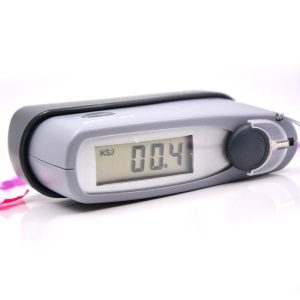Coating surface glossiness determination and glossometer determination method
introduction
In the coatings industry and related fields, the surface gloss of coatings is a very important quality characteristic. Gloss reflects the smoothness and reflective ability of the coating surface, and different application scenarios require different gloss degrees of paint. In order to ensure the quality of the coating, it is necessary to measure the surface gloss of the coating. This article describes how to use a gloss meter to measure the surface gloss of a coating, including the measurement range, the required instruments and materials, the measurement method, the result representation, and the reference standard.

1. Scope and description
Surface gloss is a characteristic of the surface of an object, which reflects the ability of the surface to reflect light. Coatings are divided into different gloss grades, including light, semi-light and no light, and their gloss value is usually expressed by gloss unit (GU). The gloss value of light paint is higher than 40 GU, the gloss value of semi-light paint is between 20 GU and 40 GU, and the gloss value of matt paint is lower than 10 GU. These gloss grades are divided according to the different gloss needs of the coating in practical applications.
This method is suitable for the determination of surface gloss of colored paints, but not for colored paints containing metallic pigments. The measurement principle is to use the gloss meter, according to the light reflection principle, the gloss of the sample is compared with the gloss standard plate, so as to obtain the surface gloss value of the coating.
Coating surface glossiness determination and glossometer determination method
2. Instruments and materials
(1) Gloss meter: The gloss meter is composed of a light source part and a receiving part. After the light emitted by the light source is treated by the lens, it shines on the coating surface at a certain Angle, and then receives the reflected light collected by the part and converts it into the gloss value by the photocell. Glossometers usually have different geometric angles, including 20°, 60°, and 85°.
(2) Standard plate: Standard plate usually includes two kinds of high gloss and low gloss. High gloss standard plate A highly polished black glass plate or a clear glass plate with black paint is used to calibrate the gloss meter. The low-gloss standard plate is mainly used to check whether the instrument is working normally and cannot be used for calibration.
3. Determination method
Before taking the measurement, the gloss meter needs to be calibrated, and then the coating surface gloss is measured according to the following steps:
Calibrate the gloss meter to ensure proper operation of the instrument.
Place the gloss meter on the surface of the sample and select the appropriate measurement Angle (20°, 60° or 85°) as required.
Three readings are measured at different locations and their average value is recorded as the surface gloss value of the specimen.
Coating surface glossiness determination and glossometer determination method
4. Result presentation
The surface gloss value is expressed in gloss unit (GU). According to the Angle used in the measurement, the gloss value at different angles can be obtained.
5. Reference standards
National standard GB/T 9754 “Color paint and varnish without metallic pigments – determination of 20°, 60° and 85° mirror gloss of color paint film”.
conclusion
The surface gloss of coating is an important parameter to evaluate its quality and applicability. By using a gloss meter, the surface gloss of the coating can be accurately measured and compared to the standard to ensure that the coating meets the desired gloss requirements. Gloss data are important for the production and application of coatings, they help manufacturers and users to evaluate the performance and appearance quality of coatings. Therefore, in the coatings industry, the measurement of surface gloss is an indispensable quality control step, helping to ensure the consistency and reliability of coatings.
